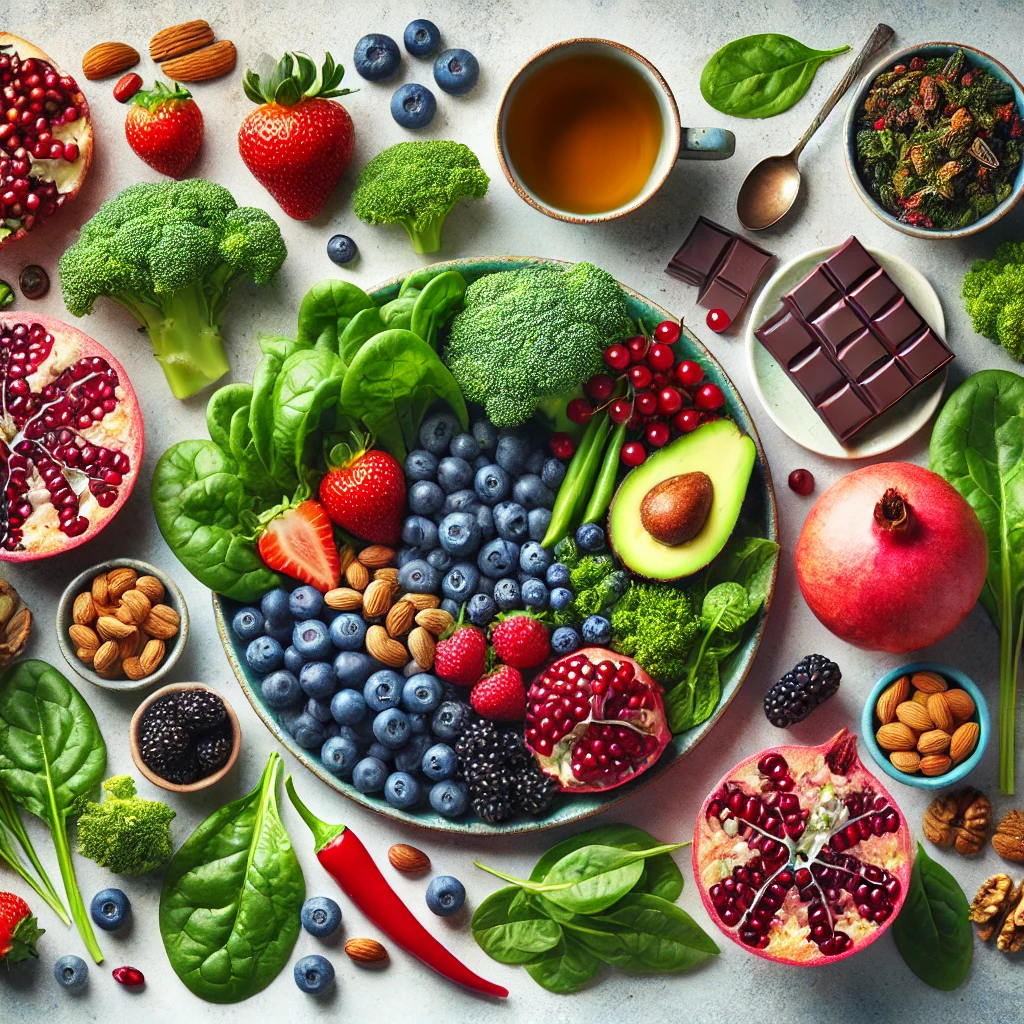The food antioxidants market refers to the industry involved in the production, distribution, and sale of antioxidants used in food products. Antioxidants are substances that prevent or delay oxidative damage to food products caused by oxygen, light, or heat, thus extending their shelf life and maintaining their quality.
Key drivers of food antioxidants market include:
- Consumer Demand for Clean Label Products: Consumers are increasingly seeking food products with natural ingredients and minimal additives. As a result, there is a growing demand for antioxidants derived from natural sources, such as vitamin E, vitamin C, rosemary extract, and green tea extract.
- Health Benefits: Antioxidants are associated with various health benefits, including reducing the risk of chronic diseases such as cancer, heart disease, and diabetes. This has led to increased demand for food products fortified with antioxidants, particularly in functional foods and beverages.
- Shelf Life Extension: Antioxidants play a crucial role in extending the shelf life of food products by preventing oxidative degradation. This is particularly important for perishable products such as oils, nuts, and fatty foods.
The global food antioxidants market size was valued at US$ 1.5 billion in 2022 and is poised to grow from US$ 1.6 billion in 2023 to US$ 2.2 billion by 2028, growing at a CAGR of 6.2% in the forecast period (2023-2028).

How does the Asia Pacific region’s preference for prepared and functional foods & beverages impact the demand for food antioxidants in that region?
- Emerging economies like China and India are currently experiencing high industrialization, leading to a surge in demand for food antioxidants as disposable incomes rise. Consequently, awareness about food antioxidants remains low in many regions.
- The Asia Pacific region is witnessing a notable increase in demand for prepared and functional foods & beverages, indicating a potential growth trajectory for the food antioxidants market in this region.
- While early adopting countries such as Japan and Germany are expected to see modest growth in the demand for food antioxidants, new and emerging markets like Thailand, Malaysia, and other Asian countries are projected to experience exponential growth.
- The global population growth is placing greater pressure on producers to manage scarce resources efficiently, with challenges like high energy prices, rising raw material costs, and water shortages impacting food prices and supply.
- Science and technology advancements are aiding in extending the shelf life of foods, with marketing efforts targeting even the smallest food & beverage manufacturers to augment the market size.
The synthetic segment is estimated to account for the largest food antioxidants industry share
Synthetic antioxidants, including butylated hydroxyanisole (BHA), butylated hydroxytoluene (BHT), tert-butylhydroquinone (TBHQ), and propyl gallate (PG), are increasingly utilized in the production of various food products. These antioxidants are produced through a conventional industrial process involving a variety of ingredients, subjecting their addition to rigorous regulations imposed by governments worldwide. The primary purpose of synthetic antioxidants is to prolong the shelf life of food products while enhancing their texture, color, and aroma.
Ready to explore further? Download your PDF copy!
The Road Ahead: Innovation and Natural Solutions
The future of food antioxidants lies in:
- Clean Label Solutions: Developing natural, plant-based antioxidants that meet consumer demands for clean and healthy ingredients.
- Transparency and Education: Building trust by clearly communicating the benefits and safety of antioxidants used in food products.
